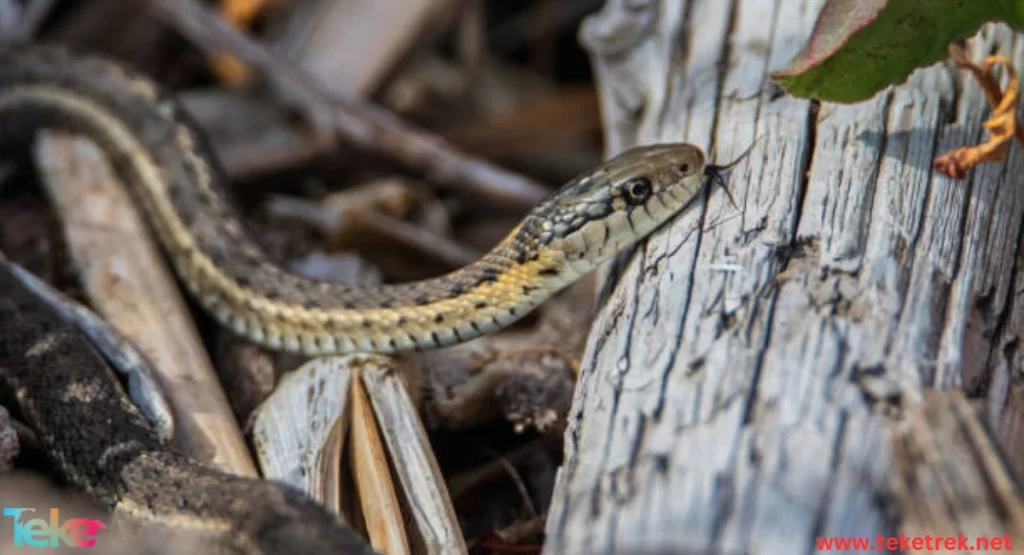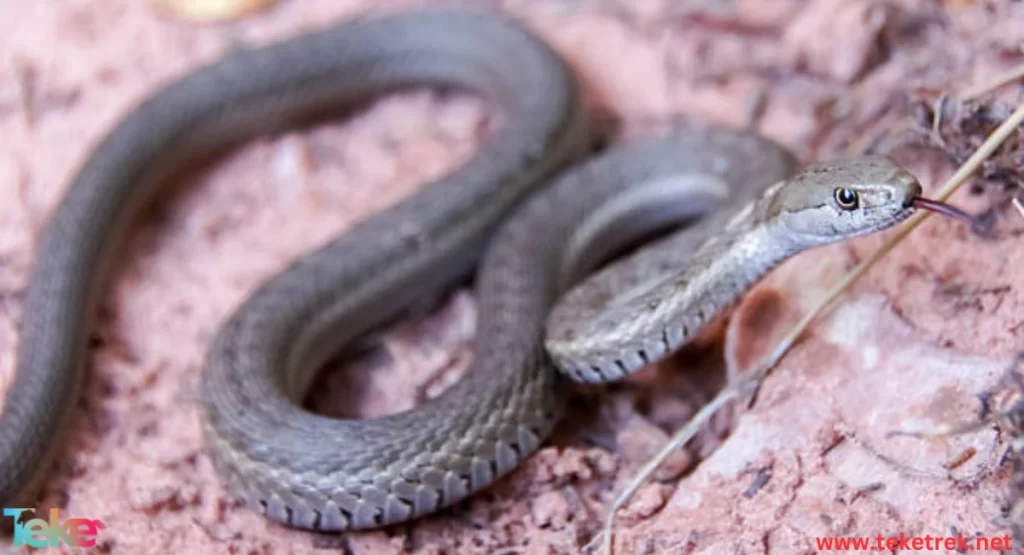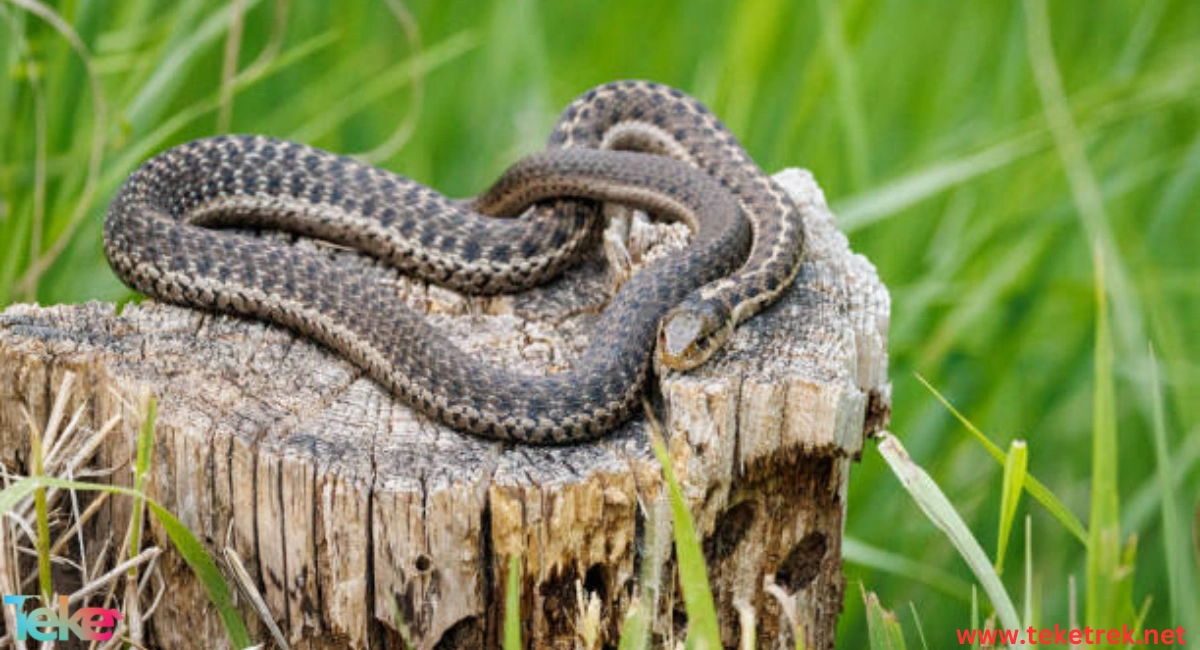The Garter Snake is one of the most widespread snakes in North America, known from Canada to Florida.
Although they are considered venomous, they are sometimes kept as pets and are not harmful or dangerous to humans.
Let’s learn more about it from teketrek.
Facts about the Grater snake
There are numerous studies that suggest that garter snakes can move quickly.
They are considered terrestrial snakes and do not move much in trees.
Garter snakes belong to the phylum Chordata.
Garter snakes are classified as non-harmful and non-venomous.
Their bite can cause mild swelling or itching on the skin, so there is no need to worry if bitten by a garter snake.
It is usually active dayily and searches for food.
Some species are said to swim excellently.
When threatened, garter snakes emit a bad smell to protect themselves from predators due to their small size.
In the cold season, garter snakes prefer to hibernate, traveling approximately 32 km to reach Canada, where they begin their hibernation period.
In winter, garter snakes live in large groups with hundreds of snakes, with one den possibly containing around 8000 snakes.
Garter snakes prefer shelter in crevices inside the earth, where they are protected from the cold and frost.

The Garter Snake Specification
The Color: Garter snakes are characterized by different colors, having a wide variety of shades. Most of them have three longitudinal stripes, one in the middle of the back and one on each side of the body, in either yellow or green. This varies by region and species. Most garter snakes have complex patterns between these stripes, making them appear changeable.
The Body: Garter snakes have relatively small bodies.
The length: ranging from 58 cm to 76 cm in length, although some can reach 1.5 meters.
Tongues: Garter snakes have two colored tongues.
Habitats of Garter Snakes Garter
snakes inhabit various places, including forests, meadows, and grassy areas.
They also prefer to be close to water.
Garter snakes are found throughout North America from the Atlantic Ocean to the Pacific Ocean, extending as far south as Canada.
What is the diet of Garter Snakes?
It feeds on amphibians and fish.
They also consume earthworms, leeches, and mice.
It has sharp teeth that help it hold its prey.
Their venom reaction is quick, and they swallow their prey whole once caught.
The Palestine Viper: A Closer Look at One of the Middle East’s Most Dangerous Snakes
Reproduction stages of Garter Snakes
The mating season for garter snakes begins after they emerge from hibernation, usually in spring, and they gather with other snakes again in the fall.
During the mating process, female garter snakes release pheromones to attract males.
Multiple males may compete for a single female, and some may use deception to distract competitors, the males secrete the females’ pheromone to attract other males in order to distract them from the female, they turn towards the male instead of the female.
After mating, females store sperm internally and fertilize their eggs when they choose to.
Females lay between 20 to 40 eggs, sometimes up to 98 eggs.
Interestingly, female garter snakes do not provide any care for their offspring like other animals do.

FAQs about Garter Snake
What are the main threats to Garter Snakes?
Due to their small size, garter snakes face threats from predators such as bears, foxes, frogs, raccoons, and birds like crows, hawks, and owls.
Are Garter Snakes endangered?
No, it is not considered endangered.
Why is it called a garter snake?
Typically, these snakes have three yellow stripes running along their backs, although the stripes can sometimes appear reddish or closer to white than yellow. The garter snake got its name from these stripes, which people described as resembling those on a garter.
Are garter snakes good to have around your house?
It is a gardener’s friend.
Nearly all subspecies of garter snakes are considered harmless to humans, according to Live Science.
Are garter snakes calm
Garter snakes generally have easygoing personalities, but they may strike if they feel ill, stressed, or threatened.
Are garter snakes poisonous?
The garter snake produces a neurotoxic venom.
In conclusion, it is important to emphasize the significance of this snake species as
they are considered harmless and not harmful to humans.
References:
meta





